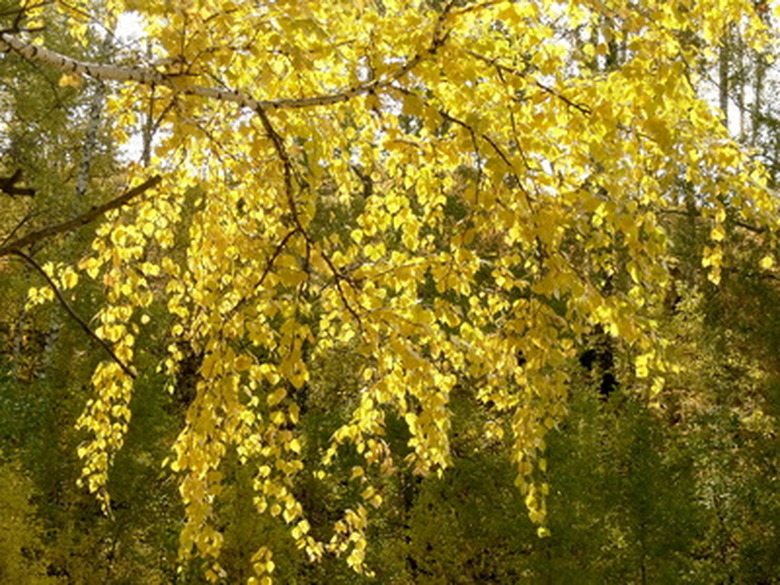Yellow Leaves On A Birch Tree
Light dances on the shimmering yellow leaves of the birch in autumn, but yellow leaves at other times of the year are no cause for celebration. Several native species of betula grace waterways and northern forests in the U.S. Although they prosper in wet soil and cold climates, their hardiness does not extend to a few weaknesses that cause leaves to yellow. Fortunately, most problems can be effectively addressed with proper cultural care.
Types
Sweet, gray, yellow and paper birches are native trees that range from the Northeast across the Midwest and northern tier of the U.S. The river birch is native throughout the Mississippi watershed and from USDA zones 4 through most of 6. The whitespire birch is more heat tolerant than other varieties. European white, weeping birch and the whitebarked Himalayan birch are non-native varieties.
- Light dances on the shimmering yellow leaves of the birch in autumn, but yellow leaves at other times of the year are no cause for celebration.
- Several native species of betula grace waterways and northern forests in the U.S.
- Although they prosper in wet soil and cold climates, their hardiness does not extend to a few weaknesses that cause leaves to yellow.
Features
Birches prefer moist, slightly acidic soils and will grow 40 to 50 feet tall. Although the trees prefer a sunny exposure, their shallow roots require shaded soil, making mulch a necessity in home landscapes. River birch (and its varietal, Heritage birch) are resistant to the bronze birch borer; other native varieties are moderately resistant but non-native varieties are all quite susceptible.
Pests
Birch leaf miner and bronze birch borer are the main insect pests affecting birch trees. Early stages of leaf miner and birch borer attacks may show up as spotty yellow blotches. Leaves will turn brown as leaf miner infections advance; birch borer infections will result in the death of the tree. Leaf rust, leaf spot and anthracnose are viruses that cause yellow blotches and spots that eventually cover leaves.
- Birches prefer moist, slightly acidic soils and will grow 40 to 50 feet tall.
- Leaves will turn brown as leaf miner infections advance; birch borer infections will result in the death of the tree.
Stress
Birch trees experience significant stress from transplanting and many varieties cannot tolerate heat. Birches are also subject to stress due to lack of water or when grass growing underneath the tree competes with their shallow roots for nutrients. These forms of stress can exhibit themselves in pale or yellowed leaves.
Chlorosis
Birch trees experience significant stress from transplanting and many varieties cannot tolerate heat. Birches are also subject to stress due to lack of water or when grass growing underneath the tree competes with their shallow roots for nutrients. These forms of stress can exhibit themselves in pale or yellowed leaves.
Solutions
Proper watering, mulching and spring fertilization with a slow-release nitrogen fertilizer all cut down on stress and make infections and infestations less likely. Amending soil so that it drains well but retains moisture helps lessen the likelihood of chlorosis. Planting a tree that is native to an area also lessens the likelihood of stress and the yellowing that it causes.
- Birch trees experience significant stress from transplanting and many varieties cannot tolerate heat.
- Birches are also subject to stress due to lack of water or when grass growing underneath the tree competes with their shallow roots for nutrients.
